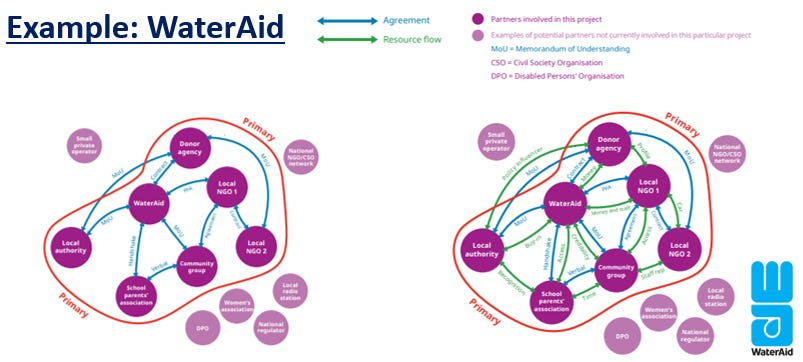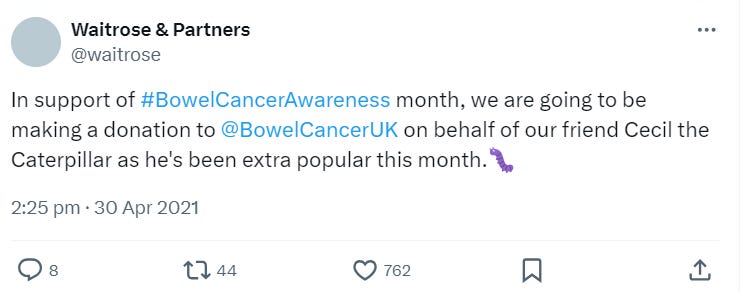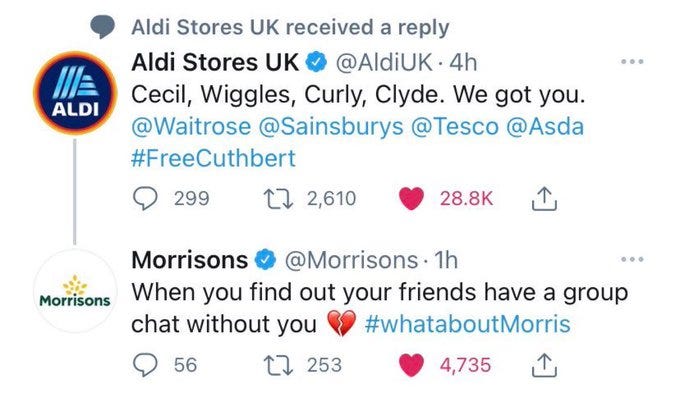
In our family, there’s a saying that has stuck through the years: gang up on the issue, not on each other. It’s a simple but useful reminder, especially in stressful or complex situations (because other families have these too I assume?)
While my kids occasionally mock me for it, they’re quick to remind me of it when I’m holding them to account for something.
It’s possible that the phrase is useful for partnership development and networking. Finding a collective approach to tackling challenges rather than falling into divisiveness, silos or competition.
This concept is especially relevant in sectors like education, where collaboration can serve as a beacon of hope and progress. Yet, it’s disheartening to see how competition, egos, and critique can sometimes dominate over collective action. These habits often exacerbate the inefficiencies of working in silos.
By embracing the principles of partnership development, we can shift from reactive firefighting to proactive problem-solving, ‘ganging up’ on the issues that matter most and driving impactful change.
Here’s some musings that have been helpful for me and colleagues across a range of organisations.
Partnership begins with positioning
Networking is marketing. Marketing yourself, your uniqueness, what you stand for."
Christine Comaford-Lynch
This quote captures some of the essence of building partnerships and networks. Effective networking isn’t just about being sociable; it’s about showcasing the value you bring to the table (even if it does involve a mandatory beige buffet). As individuals or organisations, our unique positioning, or ‘identity’ can act as a magnet, attracting or repelling those who align with our values.
Take a moment to reflect on your own positioning.
What do you and your organisation stand for?
What unique contributions do you bring to your sector?
For example, if you’re reading my Substack, you’re likely interested in growing partnerships and addressing inequalities. Unless of course you’ve fallen for the ruse that I’m a decent bloke and half-decent writer….
I appreciate it’s a divisive example, but I’d recommend looking up James Carville and what he has recently shared about Donald Trump becoming US President (again!). Another media guru claims Trump’s campaign was a masterclass in digital marketing. Whatever your view on his politics, he and his team appear to know the identity and positioning needed to get voters (e.g. even moments after this attempt on his life he embraced a photo opportunity!)
(Source: PrTechNews, 2024)
I’m not advocating particular political views or stances here either.
Positioning and identity are vital in attracting and repelling . It’s what makes others want to position alongside you and what you and the organisation stand for.
Positioning around problems
Building decent partnerships should begin with an understanding of the problem you are trying to collectively ‘gang up’ on.
In my experience across education, charity work, and community initiatives, identifying a shared problem serves as a powerful starting point for collaboration. A shared problem can spur urgency, direction, and a sense of unity.
Here’s a simple thinking-exercise I find helpful:
Identify a specific problem you regularly encounter within your sector/org
Reflect on its impact and the potential needs that arise as a result.
For instance, in my role as an education leader, I’ve seen the growing need among families in Teesside due to the cost-of-living crisis. This has led to teachers and education leaders facing increasing workloads, fatigue, and a lack of expertise in addressing these challenges at times. Recognising this problem highlights a clear need for training and resources, such as trauma-informed approaches, to better support both teachers and families.
By starting with a problem, teams can:
Pinpoint gaps in expertise or resources.
Better understand complex challenges beyond immediate symptoms.
Shift from reactive to proactive solutions.
Spot opportunities for partnership or network growth.
I’ve written more extensively about approaches to problem analysis here.
Who cares?
Once we’ve considered what the problem ‘might’ be (because you also now want to go and test that with others!), you’re in a better position to consider who else might care about tackling these issues.
This is where a network map can be helpful. A network map is a visual representation of the people, teams, and organisations already (or potentially) involved in addressing the issue you’ve identified.
Here’s another simple way to start this…
Identify who is already helping tackle the issue(s) locally/regionally and beyond
Consider what work they’re doing and how you might collaborate.
Spot the gaps: who’s missing, and who else should be at the table?
A solid example is WaterAid’s partnership model.
WaterAid create maps showing existing partners and potential collaborators, detailing the resources each partner contributes, from tangible assets like funding and data to intangibles like reputation and access to communities. These maps allow them to see the bigger picture and identify opportunities to strengthen and expand their partnerships. You can read more about it in depth here.
(Source: WaterAid, 2021)
Network maps don’t just highlight gaps; they summarise the flow of resources and give an understanding of how stakeholders can complement one another’s efforts. I think it’s also helpful for identifying where possible competition or conflict might be an issue also.
Practical tools
To continue to ‘gang up’ on issues and counter working in a silo, there are a few habits that I find especially helpful.
Key and Strategic Account Management (KaSAM)
KaSAM might sound like a comic-book character, but it’s more impressive (and that’s coming from a comic book geek!)

Assign someone on your team (or a group if possible) to manage key accounts and relationships. Treat partnerships like the valuable assets they are. Schedule regular check-ins to keep things on track and ensure clarity on both sides. I have a host of tools that my various networks and I use to support this. Examples here.
Go beyond a single point of contact
Don’t put all your eggs in one contact!
The educator and charity sectors can often see a high turnover workforce, so try to have multiple contacts in organisations to avoid having to start again each time. Develop a key account plan that involves multiple individuals on both sides.
This ensures continuity, even if someone changes roles or leaves an organisation. It can be helpful to ask partnership organisations for a copy of their organogram if you are close enough to do so.
Purposeful social media interactions
Leverage social media as a storytelling tool.
When retailer Marks & Spencer threatened legal action over alleged trademark infringement of their Colin the Caterpillar Cake, supermarket retailer Aldi turned the spotlight on public opinion with its #freecuthbert campaign.
Instead of focusing solely on legal battles, Aldi used humor and empathy to position itself as a gracious (albeit comical) disruptor.
(Source: Twitter, 2021)
A single tweet parodying M&S’s tagline sparked public support, trending on Twitter within hours and earning ALDI big PR. The campaign’s success showcased the power of social media and creativity in challenging competition!
It attracted potential partnerships too….
(Source: Twitter, 2021)
Tell the story of your partnerships using social media.
Highlight your partnerships, tag your collaborators, and celebrate shared successes. I’m guilty of a standard ‘wow that was a great meeting’ one-liners, but I think social media can be much more than this.
Think of your posts as a virtual high-fives that keep partnerships being valued and visible. Feel free to tag me in the process too! :)
Challenge partnership myths
"Your network is your net-worth."
– Porter Gale
Networking isn’t about superficial chatter over a sausage roll; it’s about building purposeful, authentic connections (even if it does sometimes involve a beige buffet!)
I’ve had times where I have had to convince colleagues in organisations of why it is important to ‘get out’ and meet others. In education, capacity and workload too often can get in the way of these opportunities.
Your network becomes an asset, helping teams navigate challenges and unlock opportunities. By focusing on collective impact over individual gain, you can cultivate partnerships that genuinely make a difference.
If networking feels awkward or transactional, try to shift your perspective. Instead of thinking, What can they do for us? ask, How can we solve this together?
In our context at Tees Valley Education, we sometimes take this further to ask how will our children, families and communities benefit from this collective approach.
Building partnerships and networks isn’t something that organisations should be doing ‘in addition’ to day-to-day business. It should be part of the day-to-day business.
In my experience, it can be vital for tackling complex challenges. By ganging up on the problem, not on each other, organisations and individuals can create a culture of collaboration that champions and leads to real change. Example here.
What is the current or next big problem on your horizon?
Who will you invite to tackle it with you?
If you’re interested in learning more about this or hiring somebody from Tees Valley Education to workshop more of it with you/your team, just reach out :)
NB: No partnerships or confectionary caterpillar disputes were harmed during the authorship of this blog… I hope!







